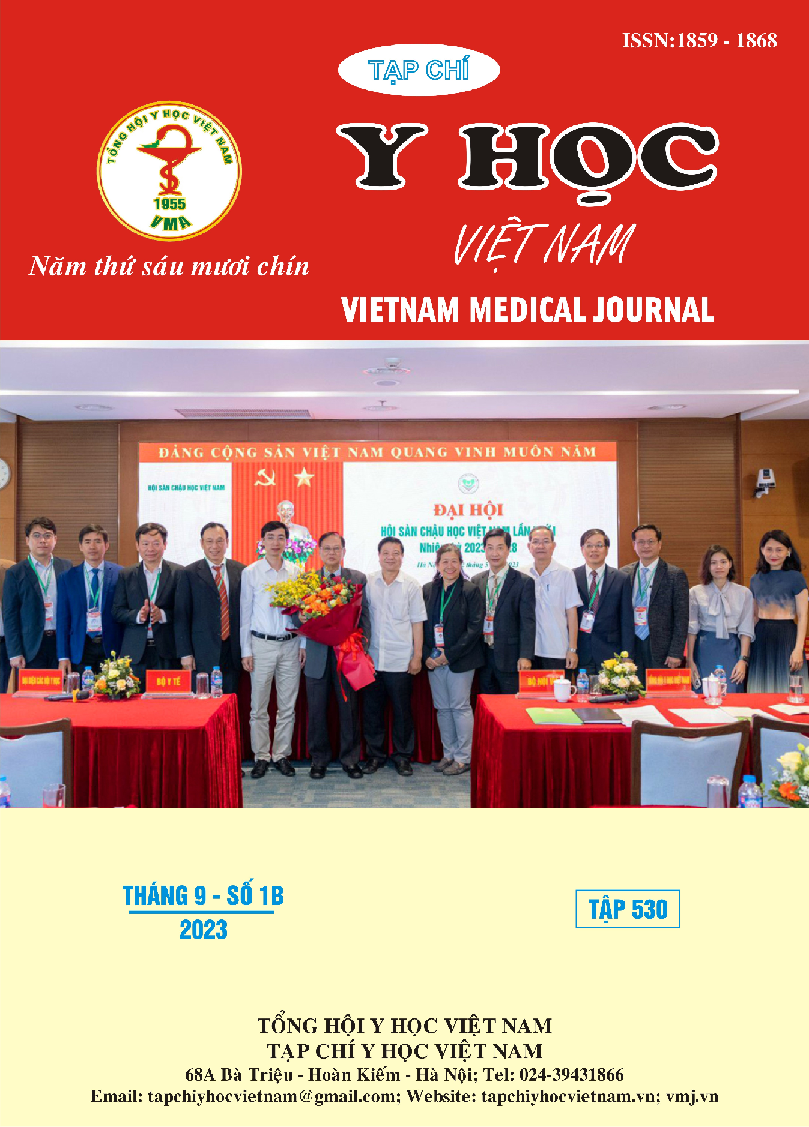STUDY ON ANTI-INFLAMMATORY EFFECT OF CURCUMINOIDS STANDARDIZED EXTRACTION OF RHIZOMA CURCUMA LONGA IN EXPERIMENTAL ANIMALS
Main Article Content
Abstract
Background: Rhizoma Curcumae longae is a very common medicinal plant grown in Southeast Asia with many useful uses such as antibacterial, cancer treatment, anti-inflammatory, stomach ulcers [1]. There have been many pharmacological studies on turmeric but currently there are no pharmacological study of curcuminoids standardized extract. Therefore, there is a need to investigate the in vivo anti-inflammatory effect, which is the premise for the creation of standardized extracts that control the curcuminoid content of turmeric to improve the patient's inflammation. Objective: To evaluate the anti-inflammatory effects of standardized extracts of curcumine I, II, III from turmeric rhizomes in Swiss albino rats. Materials and methods: Highly standardized turmeric with controlled curcuminoid content was determined by liquid chromatography coupled with photodiode array detector (HPLC/PDA). Using carrageenan mouse paw inflammation model and measuring rat paw edema to evaluate anti-inflammatory effect. Results: High standardized turmeric at both 0,4 g/kg and 0,8 g/kg doses demonstrated anti-inflammatory effects in a rat foot edema model caused by acute carrageenan. At a dose of 0,8 g/kg, they both reduced the level of inflammation of the rat's feet to a statistical significance compared to the physiological control group and exhibited the same anti-inflammatory effect as diclofenac. Conclusion: High standardization of turmeric 0,8 g/kg gives good anti-inflammatory effect on white mice equivalent to diclofenac 0,05g/kg.
Article Details
Keywords
Anti-inflammatory, carrageenan, high standardization, curcuminoid, yellow turmeric.
References
2. Viện Dược liệu (2004), Cây thuốc và động vật làm thuốc ở Việt Nam, tập I-II, Nhà xuất bản Khoa học và kỹ thuật, 383-391 (II), 1102-1104 (II).
3. Bộ Y tế (2015), Hướng dẫn thử nghiệm tiền lâm sàng và lâm sàng thuốc Đông y, thuốc từ dược liệu. Ban hành Quyết định số 141/QĐ-K2ĐT ngày 27/10/2015, tr 13-17.
4. Chandrashekar K. S. et al. (2010), Anti-inflammatory activity of Moringa oleiferastem bark extracts against carrageenen induced rat paw edema, Journal of Chemical and Pharmaceutical Research, 2(3): 179-181.
5. Refs: Blassan P. Geogro, Thangrai Parimelazhagan (2013), Anti-inflammatory, analgesis and antipyretic activities of Rubus ellipticus. Smith leaf methanol extract, International Journal of Pharmacy and Pharmaceutical Sciences, 5(2), 220-224;
6. Collin Rudolf Nobbs Gereniu, Periaswamy Sivagnanam Saravana, Byung-Soo Chun, Recovery of carrageenan from Solomon Islands red seaweed using ionic liquid-assisted subcritical water extraction, Separation and Purification Technology Volume 196, 8 May 2018, Pages 309-317
7. NSAIDs and cardiovascular risk, Prescriber Update 40(2): 26-28 June 2019, medsafe New Zealand Medicines and Medical Devices Safety Authority.
8. J.M. Cooney, M.P.G. Barnett, Y.E.M. Dommels, et al. A combined omics approach to evaluate the effects of dietary curcumin on colon inflammation in the Mdr1a−/− mouse model of inflammatory bowel disease. J Nutr Biochem, 27 (2016), pp. 181-192


